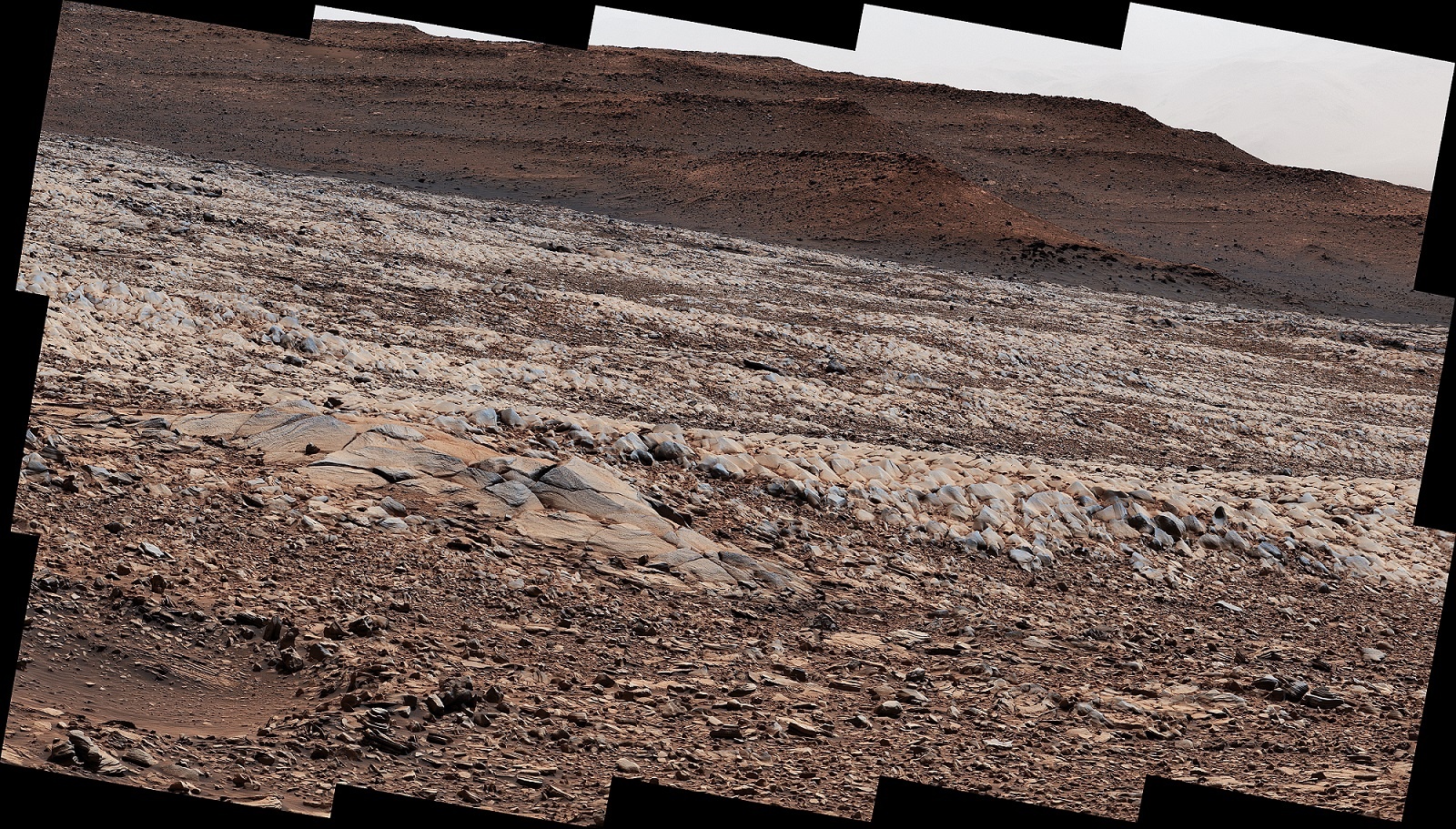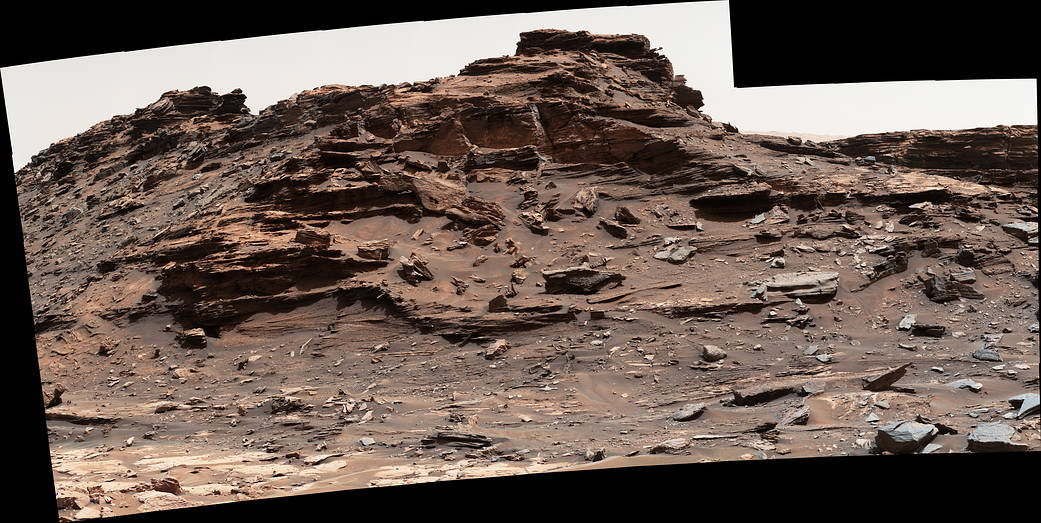Right now, the Curiosity rover continues to climb Mount Sharp (Aeolis Mons), the central peak within the Gale Crater on Mars. This massive pile of rock and sediment was created over the course of 2 billion years by liquid water that flowed into the crater, creating a layered structure that stands around 5.5 km (18,000 ft) tall. Many of these layers were deposited when the crater is thought to have been a lakebed, which makes it a prime location to search for evidence of past life (and maybe present) on Mars.
Climbing this feature is hard work and can cause severe wear on Curiosity’s metal wheels. The rover began climbing the southern edge of “Greenheugh Pediment,” a gentle slope topped by sandstone rubble that scientists want to learn more about. A few weeks ago, the rover suddenly encountered a huge patch of wind-sharpened rocks known as ventifacts (aka. “gator back” terrain). This forced the mission team to plot an alternate route so that Curiosity can continue to get more life out of its wheels.
Continue reading “Curiosity is Going to Find a new Route Around This Tricky Patch Called “Gator-Back Terrain””

